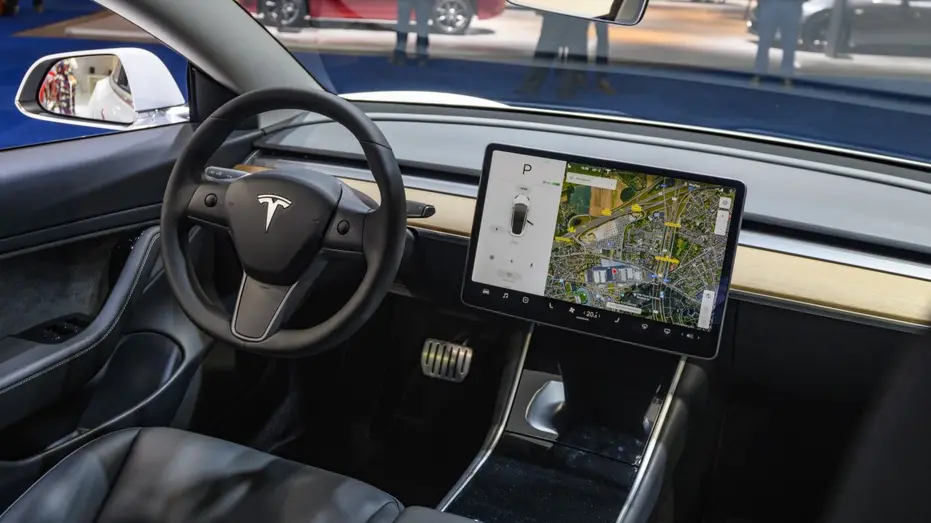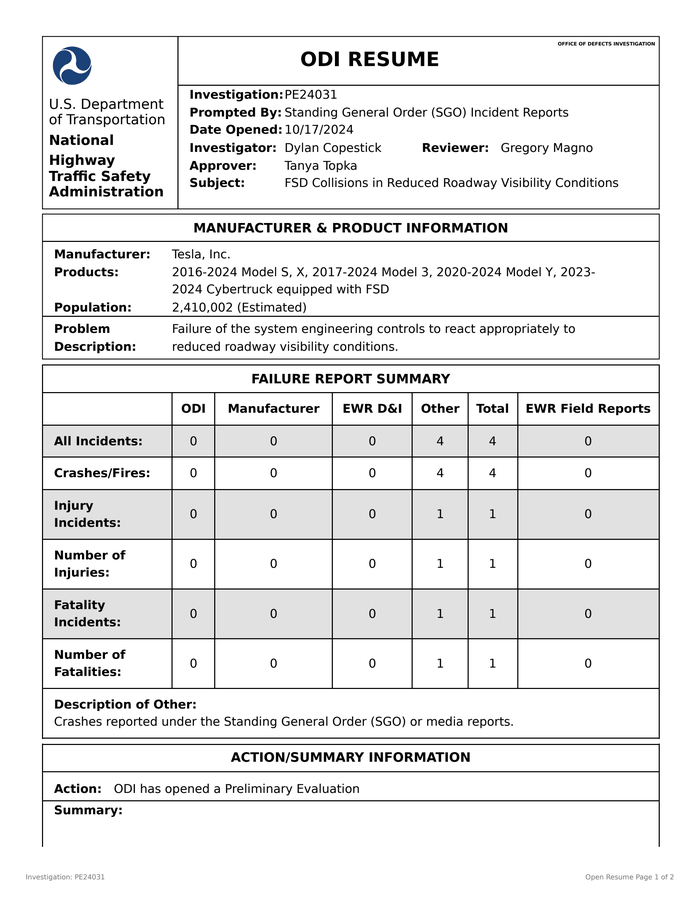In a development that’s raising eyebrows across the automotive industry, federal safety regulators have launched an investigation into Tesla’s Full Self-Driving (FSD) technology. The focus? A series of concerning crashes in conditions where Mother Nature decided to throw a curveball at the sophisticated AI system.
The Investigation at a Glance
The National Highway Traffic Safety Administration (NHTSA) has initiated a preliminary evaluation after identifying four critical incidents involving Tesla vehicles operating with FSD in challenging visibility conditions. Perhaps most alarming is a fatal accident in Rimrock, Arizona, where a Model Y tragically struck and killed a pedestrian last November.
Vehicles Under Investigation
- Tesla Model S (2016-2024)
- Tesla Model X (2016-2024)
- Tesla Model 3 (2017-2024)
- Tesla Model Y (2020-2024)
- Cybertruck (2023-2024)
The Core Issues

The investigation zeroes in on how Tesla’s FSD system performs when faced with environmental challenges such as:
- Sun glare
- Dense fog
- Airborne dust
- Other visibility-reducing conditions
Let’s be honest – these aren’t exactly rare occurrences on our roads. The fact that Tesla’s system might struggle with conditions that every human driver encounters regularly raises serious questions about its readiness for real-world deployment.
Previous Incidents and Investigations
This isn’t Tesla’s first rodeo with safety investigations. In 2023, the company faced scrutiny over multiple incidents involving its Autopilot system, including a series of collisions with emergency vehicles. The company responded by implementing a “fleet-wide” software update, though critics argued this was more of a band-aid than a comprehensive solution.
Another notable case occurred in early 2024, when multiple Tesla vehicles were reported to have difficulty identifying and responding to temporary traffic signals in construction zones. These incidents led to a separate NHTSA investigation and ultimately resulted in a recall affecting over 2 million vehicles – the largest in Tesla’s history.
Learn More: Ubisoft Milan joins Ubisoft France strike over return to office
Tesla’s Response and Industry Impact
Tesla’s approach to these safety concerns has been… well, characteristically Tesla. While the company hasn’t directly addressed the current investigation, their recent blog post emphasized that FSD remains in beta and requires “active driver supervision.” However, safety advocates argue that the term “Full Self-Driving” itself creates dangerous misconceptions about the system’s capabilities.
The ripple effects are being felt throughout the autonomous vehicle industry. Companies like Mercedes-Benz and BMW have notably doubled down on their multi-sensor approach, with Mercedes’ CEO recently stating, “When it comes to safety systems, redundancy isn’t just an option – it’s a necessity.”
The Musk Factor: Vision vs. Sensors
Here’s where things get interesting. Tesla CEO Elon Musk has long championed a camera-based approach to autonomous driving, dismissing sensor-based systems as “doomed” and “a fool’s errand.” This stance stands in stark contrast to competitors like Waymo, who employ a comprehensive suite of sensors including:
- Lidar
- Multiple cameras
- Radar systems
The timing of this investigation is particularly noteworthy, coming just a week after Tesla unveiled its ambitious Cybercab robotaxi project. Talk about uncomfortable timing.
What NHTSA Wants to Know

The federal investigation will focus on three key areas:
- System Performance: How well does FSD detect and respond to reduced visibility?
- Incident Analysis: Are there other similar crashes we don’t know about yet?
- System Updates: What modifications has Tesla made to address these challenges?
Safety First?
While Tesla’s innovation in autonomous driving technology is undeniable, this investigation raises crucial questions about the balance between technological advancement and public safety. As companies race to dominate the self-driving market, perhaps it’s time to ask whether a more measured approach might be warranted.
For now, Tesla owners using FSD should exercise extra caution in challenging visibility conditions. After all, when it comes to road safety, it’s better to be overly cautious than make headlines for all the wrong reasons.

